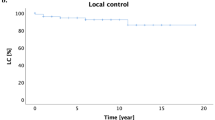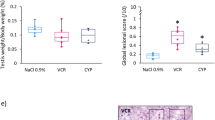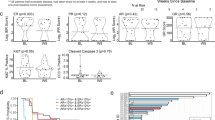Abstract
SINCE radioisotopes became available, many papers have been published concerning their clinical use as well as their potential harmful effects. One of these agents, phosphorus-32, is now occasionally being used in non-malignant conditions ; consequently an effect which may be irrelevant in a cancer patient may become important in a young person who is likely to survive for some years ; for example, the effect on the gonads. Previous knowledge on the subject is somewhat confusing1–5, and no functional test has apparently been carried out so far.
Similar content being viewed by others
Article PDF
References
Bloom, W., NNES, Div. IV, 22, 1 (1948).
Warren, S., MacMillan, J. C., and Dixon, F. J., Radiology, 55, 557 (1950).
Odeblad, E., Acta Radiologica, 38, 33 (1952).
Odeblad, E., Acta Radiologica, Supp. 93 (1952).
Kawin, B., Hanford Atomic Products Operation, Richland, Washington (Nov. 21, 1958).
Author information
Authors and Affiliations
Rights and permissions
About this article
Cite this article
HOLMBERG, E., PAVLOVSKY, A., DE PASQUALINI, C. et al. Fertility of Mice treated with Phosphorus-32. Nature 187, 876 (1960). https://doi.org/10.1038/187876a0
Issue date:
DOI: https://doi.org/10.1038/187876a0



